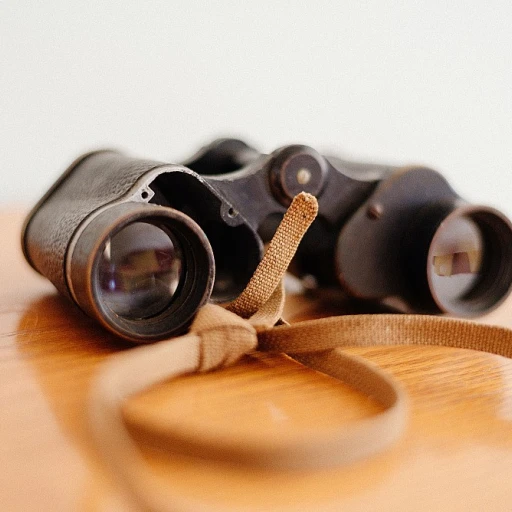The Importance of Monitoring After-Hours Office Access
Why Monitoring After-Hours Office Access Matters
In today’s fast-paced business environment, understanding who accesses your office after hours is crucial for both security and operational efficiency. Employers need to ensure that their workplace remains secure, while also respecting the privacy of their employees. This balance is a key component of effective workplace monitoring.
After-hours access can be a blind spot in many companies' security systems. Without proper monitoring, unauthorized access can lead to data breaches, theft, or even sabotage. For businesses, especially small businesses, the implications of such incidents can be severe, affecting everything from employee morale to overall productivity.
Enhancing Security with Technology
Modern surveillance technologies and access control systems provide real-time data on who enters and exits the workplace. These systems are invaluable for management, offering insights into potential security threats and ensuring that the work environment remains safe for all employees. By leveraging such technology, companies can maintain a secure environment without compromising employee privacy.
However, it’s important to remember that workplace monitoring should not infringe on personal data rights. Employers must strike a balance between necessary surveillance and respecting the privacy of their workers. This is not only a legal obligation but also a moral one, as it impacts job satisfaction and employee engagement.
Balancing Security and Privacy
As we delve deeper into the topic, it becomes clear that balancing security and privacy is not just about using the right technology. It involves creating a culture of trust and transparency within the company. Employees should be aware of the monitoring systems in place and understand how their data is being used. This transparency can foster a sense of security and trust, enhancing the overall work experience.
Balancing Security and Privacy
Finding the Right Balance Between Security and Privacy
In today's ever-evolving work environment, the challenge of balancing security and privacy when implementing workplace monitoring strategies is increasingly significant for employers. While businesses need to ensure safety and productivity, it is equally important to respect the personal data and privacy rights of employees.
Companies often utilize surveillance technologies such as monitoring software, video surveillance, and real-time access control systems to protect their assets and manage workplace access efficiently. These tools help employers monitor who enters and exits the office, particularly after hours, ensuring that only authorized personnel have access. However, these measures can raise privacy concerns among employees, particularly when they feel their non-work time and personal data are being invaded.
Employers must be transparent about their surveillance practices to reduce privacy anxiety and maintain high levels of employee engagement. Clearly communicating the reasons for workplace monitoring and how the collected data will be used helps build trust and enhances job satisfaction. Moreover, understanding the nuances of data protection and privacy employee rights can inform better policies that support productivity without compromising privacy.
A strategy that incorporates employee feedback can prove beneficial in aligning monitoring practices with employee expectations. Encouraging open dialogues about privacy and providing platforms for workers to express their concerns allow companies to address potential issues proactively, resulting in more effective workplace surveillance policies.
Impact on Employee Morale and Feedback
{ "result": "Exploring the Ramifications on Employee Morale and Feedback
\n\nEmployee monitoring, particularly when it involves after-hours office access, can have a significant impact on employee morale and feedback. Employers who seek to balance security with privacy must be mindful of how surveillance techniques in the workplace could shape the overall work environment. Here’s why this area warrants thorough consideration: \n\n- \n
- Trust and Transparency: When businesses implement after-hours monitoring, employees may feel their trust is being questioned. Transparency about the reasons for monitoring and how data is used can help alleviate concerns, fostering a sense of mutual respect and understanding. \n
- Feedback Mechanisms: Encouraging feedback about monitoring practices from workers is crucial. This could enhance employee engagement, as workers feel their input is valued. Creating a feedback-driven approach not only supports privacy but also builds a culture where employees feel heard. For strategies on gathering and utilizing such feedback, check out this perfect employee feedback template. \n
- Productivity Versus Privacy: Surveillance technologies such as video monitoring and access control systems should be carefully balanced against privacy considerations. While these tools can undeniably bolster security and efficiency, they also pose a risk of privacy invasion if not handled appropriately. \n
- Job Satisfaction and Privacy Balance: Employee satisfaction often hinges on how their personal data is managed. Employers must ensure robust data protection policies are in place, paving the way for a respectful and legally compliant monitoring system. \n
Technological Solutions for Monitoring
Innovative Tools for Effective Monitoring
In today's fast-paced business world, technology plays a crucial role in managing employee activities, especially when it comes to monitoring after-hours office access. Companies are increasingly turning to advanced surveillance technologies to ensure both security and productivity without compromising employee privacy.
Here are some of the key technological solutions that can help businesses monitor after-hours access effectively:
- Access Control Systems: These systems are essential for regulating who can enter the workplace after hours. By using key cards or biometric scanners, companies can track and log entry and exit times, ensuring that only authorized personnel have access to the premises.
- Video Surveillance: Installing video cameras in strategic locations can help monitor activities in real time. This not only enhances security but also provides valuable data for management to review in case of any incidents.
- Monitoring Software: Software solutions can track computer usage and log activities, providing insights into employee productivity during non-standard working hours. These tools help employers ensure that work is being conducted efficiently without unnecessary surveillance.
- Data Protection Systems: Ensuring the protection of personal data is crucial. Implementing robust data protection measures safeguards employee privacy while allowing for necessary monitoring activities.
While these technologies offer significant benefits, it's important to balance them with employee privacy considerations. Employers must be transparent about the use of surveillance technologies and ensure that data collected is used responsibly and ethically.
By integrating these technological solutions, companies can create a secure and efficient work environment that respects both business needs and employee rights. This approach not only enhances security but also fosters a culture of trust and transparency in the workplace.
Legal and Ethical Considerations
Legal Frameworks and Ethical Boundaries in Workplace Monitoring
Navigating the legal and ethical landscape of employee monitoring is crucial for businesses aiming to balance security and privacy. Companies must be aware of the legal requirements and ethical considerations when implementing surveillance technologies.Understanding Legal Requirements
Employers need to comply with various laws and regulations that govern workplace monitoring. These include data protection laws, which mandate the safeguarding of employees' personal data. In many regions, laws require that employees be informed about any monitoring practices in place, including the type of data collected and the purpose of the surveillance.- Data Protection: Regulations such as the GDPR in Europe emphasize the importance of protecting personal data. Businesses must ensure that their monitoring systems do not infringe on employees' rights to privacy.
- Transparency: Employers are often required to inform employees about monitoring practices. This includes detailing what is being monitored, how the data will be used, and who will have access to it.
Ethical Considerations in Monitoring Practices
Beyond legal compliance, ethical considerations play a significant role in how monitoring is perceived by employees. Ethical monitoring practices can enhance trust and improve employee engagement.- Respect for Privacy: While monitoring is essential for security, it should not be intrusive. Employers should respect the privacy of employees by ensuring that monitoring is limited to work-related activities and does not extend into personal spaces.
- Purpose-Driven Monitoring: Surveillance should be conducted with a clear purpose, such as enhancing security or improving productivity. Employers should avoid monitoring for the sake of monitoring, which can lead to distrust among workers.
Balancing Monitoring and Employee Trust
To maintain a positive work environment, it's vital for companies to balance monitoring with trust-building measures. Open communication and feedback mechanisms can help in achieving this balance.- Feedback Mechanisms: Implementing systems that allow employees to provide feedback on monitoring practices can help in refining these systems to better suit the needs of both the company and its employees.
- Employee Involvement: Involving employees in discussions about monitoring policies can foster a sense of ownership and trust, leading to improved job satisfaction and productivity.
Implementing a Feedback-Driven Monitoring Policy
Incorporating Employee Feedback into Monitoring Policies
Implementing a feedback-driven monitoring policy in the workplace is essential for aligning business needs with employee satisfaction and legal requirements. Consistently involving employees in discussions about monitoring systems helps maintain transparency, and fosters trust in the work environment.- Review Feedback Regularly: Employers should establish a schedule to collect and review feedback from employees about their perceptions of workplace monitoring. This process ensures that all voices are heard and that employees feel valued.
- Encourage Open Communication: Facilitating open channels of communication enables employees to express concerns, provide suggestions, and support a culture where personal privacy and business needs find balance.
- Adapt Policies Based on Feedback: Listening to employee feedback is just the first step. Employers need to be willing to adapt monitoring policies to reflect employee concerns, improve job satisfaction, and sustain productivity levels.
- Educate on Data Usage: Transparency about how employee data will be used reassures employees and aligns with data protection regulations. It nurtures a work culture that respects privacy while achieving desired security outcomes.









